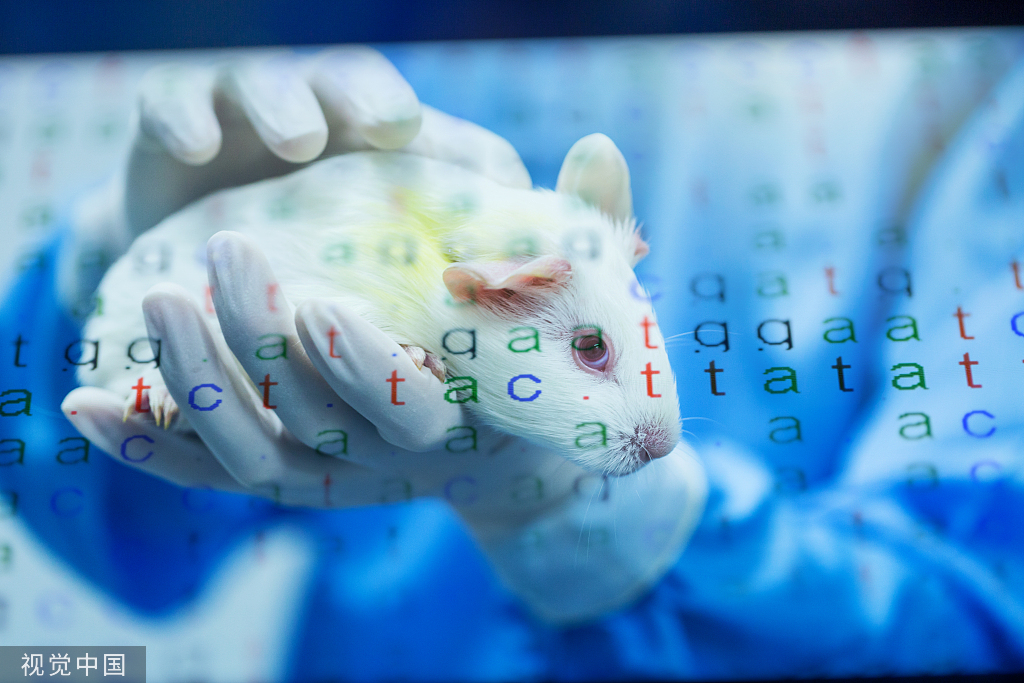
[Photo/VCG]
Chinese researchers have developed a technique that can combine two mouse chromosomes and use the new sets of chromosomes, called karyotypes, to produce living mice, according to a study published in the journal Science on Friday.
It was the first time for scientists to achieve this feat in mammals. Experts said the findings would help researchers understand the effects of chromosome fusions, which may yield key insights into an organism's evolutionary history or help doctors tackle cancers and genetic disorders.
Chromosomes are tightly coiled, thread-like structures made up of genes and play a crucial role in cell division. Most species have a fixed number of chromosomes, but over the course of millions of years, chromosomes may split or fuse, resulting in drastic physiological changes.
A well-known example is the genetic split between humans and gorillas, who share a common ancestor. One such change is that gorillas have two chromosomes that are separated in their bodies, but the same chromosomes were fused into one in humans, said Li Zhikun, a researcher at the Institute of Zoology of the Chinese Academy of Sciences and the co-first author of the study.
As for medical implications, missing or having extra chromosomes can lead to genetic disorders such as Down syndrome and childhood leukemia. Scientists also found fusion genes in several types of cancers, including prostate, breast, lung, bladder, colon and rectal, according to the United States National Cancer Institute.
Scientists have longed for a way to correct misaligned or malformed chromosomes, which would be a significant milestone for synthetic biology and medicine.
Previous studies have modified chromosomes in yeast, but attempts to apply the techniques to mammals had not been successful until now.
With the new technique, Chinese researchers fused various mouse chromosomes, creating different sizes. Then they injected the modified genes into unfertilized eggs to see if they could make a pup.
The mice with fused chromosomes did exhibit abnormalities. Some mice did not develop, while others grew into adulthood but were infertile. Some mice grew much faster than usual but seemed more anxious and physically slow in open-field tests.
According to the study, only the mice with chromosomes 4 and 5 fused could produce offspring with wild-type mice, albeit at a much lower rate than standard lab mice.
Wang Libin, a co-first author of the study and a researcher at the Institute of Zoology of the Chinese Academy of Sciences, said the study demonstrated the importance of chromosome fusion as even a slight change in their arrangement can lead to profound effects.
Li said the experiment demonstrated that chromosomal rearrangement events could be the driving force behind species evolution and provide a potential new method for large-scale engineering of DNA in mammals.
Harmit Malik, an evolutionary biologist at Fred Hutch Research Institute in Seattle who was not involved in the study, told the Scientist that the new technique is a "beautiful toolkit" that allows for more creative genetic engineering that may answer many scientific questions.